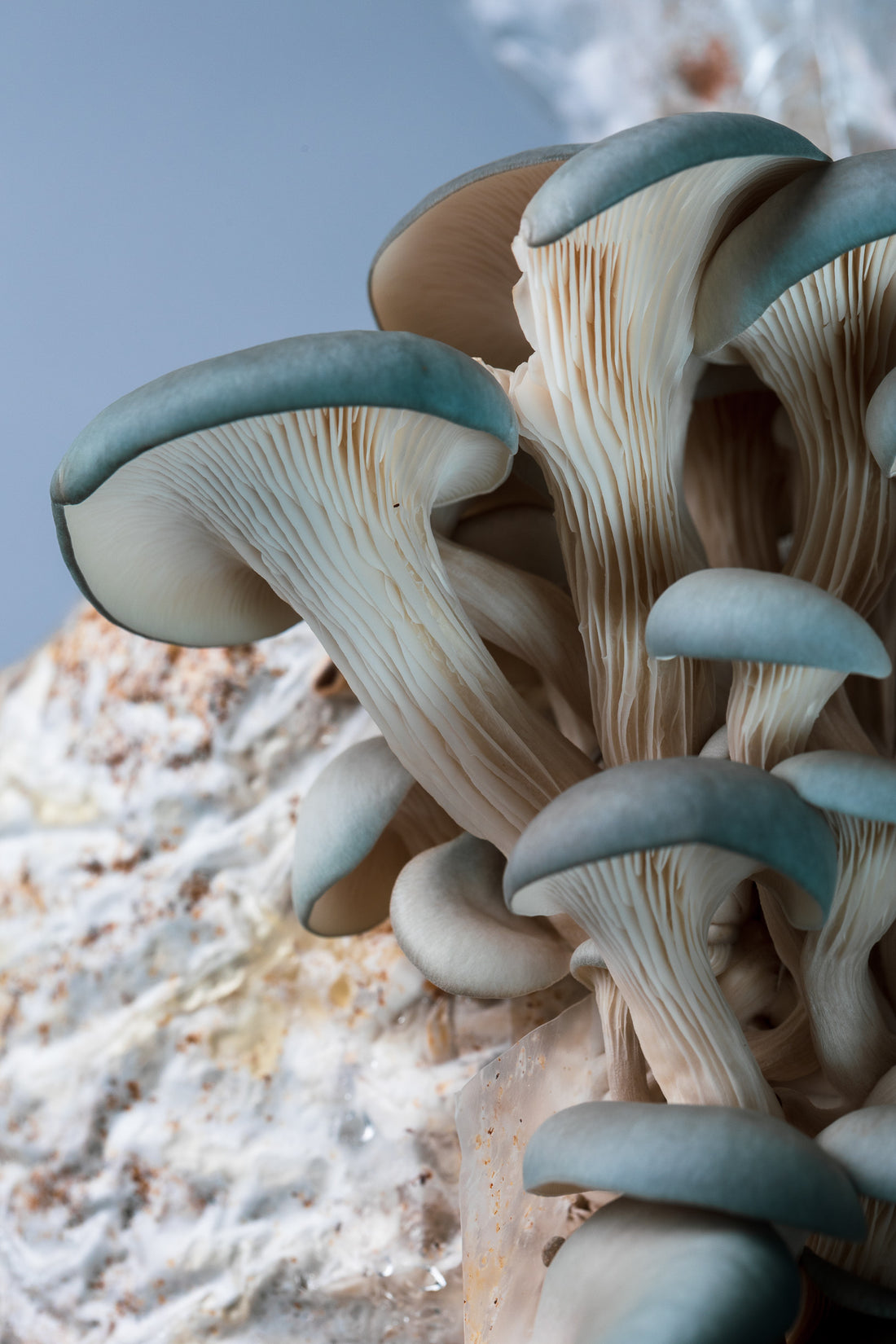Substrate is a nutrient rich medium that allows for rapid growth of mycelium. The organic materials in substrate provide mycelium with the nutrients and moisture necessary to grow and produce mushrooms.
Using substrate to grow mushrooms is the equivalent of using soil to grow plants.
It’s where the mycelium gets all the nutrients needed to produce the mushroom fruiting body that it uses spreading spores, its method of reproduction.
The list of organic materials that mushroom growers can use is long but some common ones are sawdust, soy bean hulls, wheat bran, cotton seed hulls, coffee grounds and cardboard. At Circular Farm our substrate is most often made up of oak sawdust from a local saw mill and organic soy bean hulls. To prepare the substrate these are mixed with water and pasteurized. Just like different plants require soil with different properties, different mushrooms prefer different types of substrates.
Just like different plants require soil with different properties, different mushrooms prefer different types of substrates.
It’s important to match your mushrooms with the correct substrate to have the best chance of success with growing mushrooms.
After the substrate is properly mixed and saturated it can be placed in a variety of containers. For commercial growers, it’s most common to pack substrate into specially designed plastic bags. Home growers sometimes use mason jars or 5 gallon buckets.
Pasteurize or Sterilize the Substrate
Once the substrate is mixed and loaded into the container, it needs to be pasteurized in order off any competing mold, bacteria or fungi. This gives the desired species of mushroom the best chance at taking hold. Pasteurizing can be executed with a variety of techniques, most of which use hot water and steam. At Circular Farm we use a metal barrel modified with a heating element.
Innoculate the substrate with mycelium
Although not entirely necessary, inoculation is generally done in a clean room, under sterile conditions, to minimize the chances of mold or other fungi species from competing with the mushrooms you’re trying to grow. At Circular Farm we use a laminar flow hood with a HEPA air filter. A low tech option that home growers use with great success is a still air box.
During inoculation, spawn (any nutrient dense substance, typically grain that already has mycelium growing on it which you can use to speed up your mushroom growing process) is mixed into the substrate. Although home mushroom growers can create their own spawn, the process is technical, and some choose to increase their success by purchasing spawn from commercial sources.






